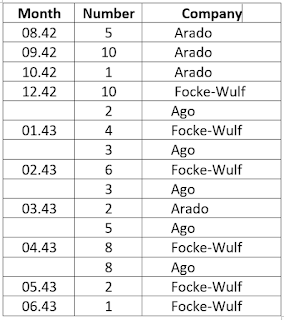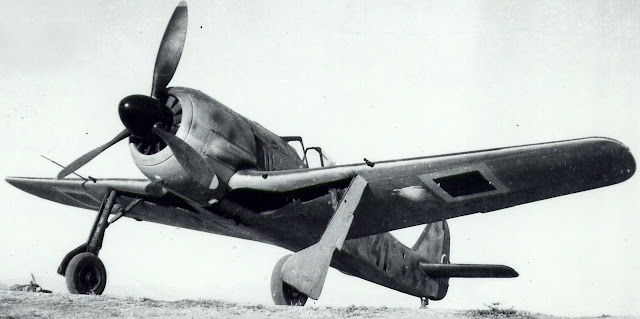 |
| In almost all respects, the Turkish planes were Luftwaffe-standard. |

Mainly the Turkish planes had four MG-17 machine guns but no cannons (20mm). Germns left leaave internal slot in every each wing that give possibility for Turks install their own 20mm cannon if they wished. Another difference between german standard butcher and Turkish were deleted precaution the FuG-25 IFF system. The Turkish planes had Luftwaffe-standard, top-line FuG VIIa radios however as a security precaution the FuG-25 IFF system was deleted. The planes had the ETC-501 drop tank receptacle but no photos show the actual 80 gallon tanks in use so it’s possible they were never delivered.
The Fw190 A-3s were assigned to the 5th Fighter regiment at Eskisehir airbase in the country’s interior, guarding central Turkey including the capital Ankara.
It' not too hard ques that very quickly butchers become very popular among Turkish pilots.
We can be sure that big deal between III Reich and Turkey was a part of Hitler's effort to form an alliance with Turkey. All his plans failed, Turkey remained neutral until declare the war against Germany in February 1945.
After the war in Summer 1945 Turks reorganized the 5th Fighter Regiment into 4 squadrons (Filos) nicknamed from colours of hair:
Filos (squadrons)
Sarybas (blondes)
Karabas (brunettes)
Albas (redheads)
Akbas (grey-haired)
The Butchers Birds pilots painted the propeller spinners in their Filo’s appropriate “hair color”. Beginning in the late autumn of 1945, the Fw-190s were repainted into all-around OD green.
 |
| few of Turkey’s Fw-190s in late 1945, during the repainting job |
 |
| Turkey's Butcher Bird |
Post WWII the Butcher Birds flying in Turkey Air Force beside alongside their former enemies: Supermarine Spitfires, P-40 Tomahawks, and Hawker Hurricanes.
In the years 1948 to 1949, Turkey began phasing out Fw190 from service. The main reason was the fact that no existence Focke-Wulf.In this way, quite a long period of cooperation between Germany and Ottoman State just finished.
 |
| A Turkish Spitfire flying in formation with two Turkish Fw-190s in early 1946. |
 |
| Turkish Fw-190s after the end of WWII, probably 1947-1948, near the end of their service lives. |
 |
| Fw190 in Turkish service |
No comments:
Post a Comment